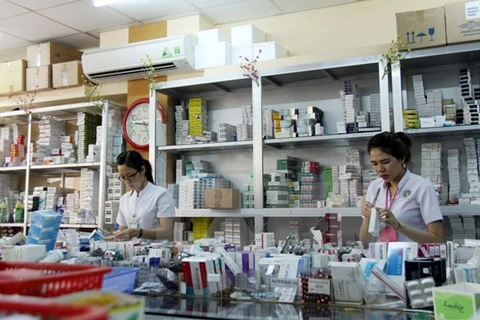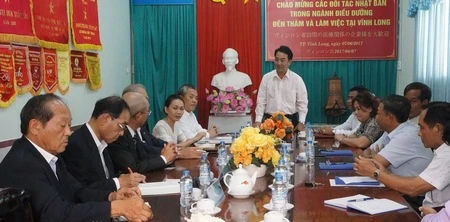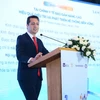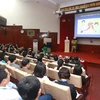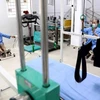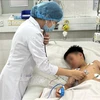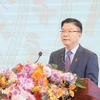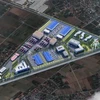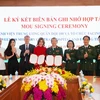HCM City (VNA) - More public-private partnerships (PPPs) are needed in the private health care sector as public hospitals and clinics cannot meet the demand across the country, experts have said.
More than 170 hospitals and 30,000 health clinics and other health establishments are privately run, with nearly 15 percent of the country’s total hospital beds, a Ministry of Health report released last year said.
The proportion of patients visiting private health facilities was only 6-7 percent.
Other countries in Asia have a higher ratio of private hospital beds, with Indonesia having 37 percent of its beds in private facilities and Thailand 24 percent, Professor Pham Manh Hung, Chairman of the Vietnam Social Medical Association, said on the association’s website.
Dr Vo Xuan Son, director of EXSON International Clinic in HCM City, said that private health facilities had not developed well because the Government had not issued many preferential policies or benefits for them.
Son said some private hospitals had invested a great deal in their facilities, but this had contributed to higher hospital fees. As a result, some of them have closed.
An Khang International General Hospital had to close because its turnover could not cover expenditures for medicine, human resources and other fees related to operations.
To attract patients, many private health facilities have signed contracts to admit patients with health insurance. In these cases, insured patients visited private health facilities and paid lower fees.
By 2020, more than 90 percent of its population is expected to have health insurance.
However, Son said that it was difficult to sign contracts with the Social Insurance Agency.
The regulation on allowing doctors of public hospitals to work at private health facilities after official working hours has not led to favourable conditions for private facilities, he added.
In many other countries, a doctor can work at two or more hospitals during official working hours, Son said.
Truong Vinh Long, general director at Hoa Lam International Hospital Co.Ltd, said: “It is a waste of human resources in the health sector.”
“Investment in the health sector has higher risks than in other sectors. For instance, a fault in production can be acceptable except the health sector. But a high price has to be paid in the health sector for mistakes,” Long said.
Investors must look at the long term and “reduce inessential expenditures to maintain operation in the first few years,” he said.
Long said that the PPPs were the key to develop private health facilities as they typically have modern facilities and professional governance.
Public health facilities have advantages such as a brand name, doctors with high qualifications, and a large number of patients, he added.
Private and public health facilities can work together and take advantage of their respective strengths, he said.
The Government has issued policies and decrees for PPPs, but the regulations need to be more specific in how to carry out the PPPs, he added.
Private health facilities should develop in fields where public hospitals have not specialised, he said.
At a meeting held early this year reviewing the health sector, Prime Minister Nguyen Xuan Phuc urged speedier development of the private sector, particularly because of limited state funds.-VNA
More than 170 hospitals and 30,000 health clinics and other health establishments are privately run, with nearly 15 percent of the country’s total hospital beds, a Ministry of Health report released last year said.
The proportion of patients visiting private health facilities was only 6-7 percent.
Other countries in Asia have a higher ratio of private hospital beds, with Indonesia having 37 percent of its beds in private facilities and Thailand 24 percent, Professor Pham Manh Hung, Chairman of the Vietnam Social Medical Association, said on the association’s website.
Dr Vo Xuan Son, director of EXSON International Clinic in HCM City, said that private health facilities had not developed well because the Government had not issued many preferential policies or benefits for them.
Son said some private hospitals had invested a great deal in their facilities, but this had contributed to higher hospital fees. As a result, some of them have closed.
An Khang International General Hospital had to close because its turnover could not cover expenditures for medicine, human resources and other fees related to operations.
To attract patients, many private health facilities have signed contracts to admit patients with health insurance. In these cases, insured patients visited private health facilities and paid lower fees.
By 2020, more than 90 percent of its population is expected to have health insurance.
However, Son said that it was difficult to sign contracts with the Social Insurance Agency.
The regulation on allowing doctors of public hospitals to work at private health facilities after official working hours has not led to favourable conditions for private facilities, he added.
In many other countries, a doctor can work at two or more hospitals during official working hours, Son said.
Truong Vinh Long, general director at Hoa Lam International Hospital Co.Ltd, said: “It is a waste of human resources in the health sector.”
“Investment in the health sector has higher risks than in other sectors. For instance, a fault in production can be acceptable except the health sector. But a high price has to be paid in the health sector for mistakes,” Long said.
Investors must look at the long term and “reduce inessential expenditures to maintain operation in the first few years,” he said.
Long said that the PPPs were the key to develop private health facilities as they typically have modern facilities and professional governance.
Public health facilities have advantages such as a brand name, doctors with high qualifications, and a large number of patients, he added.
Private and public health facilities can work together and take advantage of their respective strengths, he said.
The Government has issued policies and decrees for PPPs, but the regulations need to be more specific in how to carry out the PPPs, he added.
Private health facilities should develop in fields where public hospitals have not specialised, he said.
At a meeting held early this year reviewing the health sector, Prime Minister Nguyen Xuan Phuc urged speedier development of the private sector, particularly because of limited state funds.-VNA
VNA



